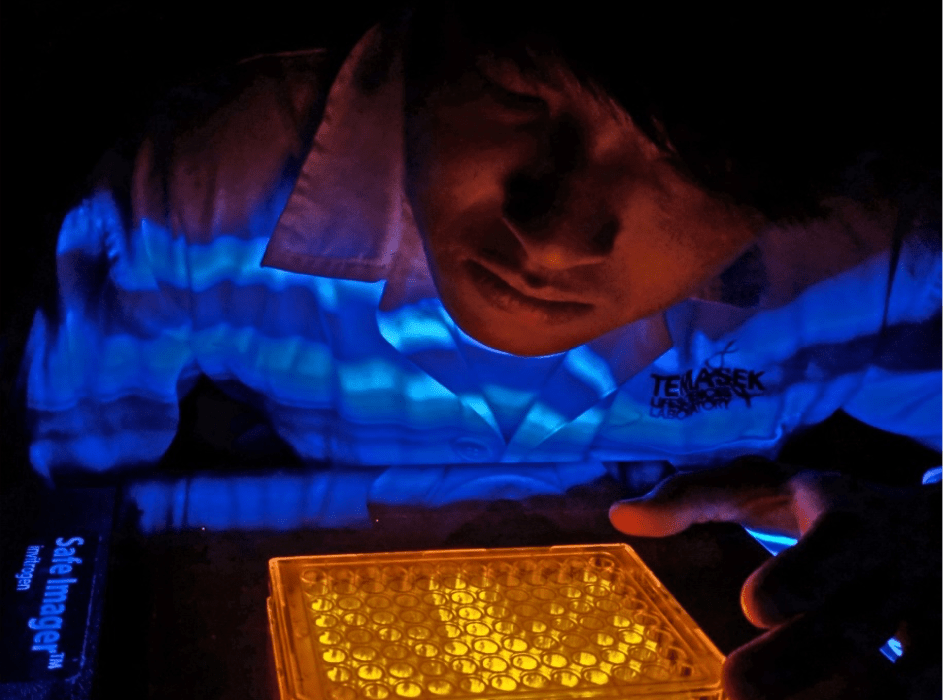New Test Kit Can Detect Bacterial Pathogen in Food
27 Aug 2017
A researcher using the BETA test kit to detect bacteria in food
A team of researchers led by Dr Ian Cheong from Temasek Lifesciences Laboratory (TLL) has successfully created a miniaturized and cost-effective test kit for bacterial pathogen detection. The new rapid test kit can produce highly accurate results in hours, a remarkable improvement over the current conventional method using red blood agar which could take days, causing delays in diagnosis and treatment.
With online ordering and delivery services becoming more prevalent, Singaporeans have many choices when it comes to food. Yet, few Singaporeans are aware of threats which potentially lurk within their food. For example, a recent Singapore study showed that a significant percentage of tested smoked salmon samples from salad bars (86.7%) and pre-packed supermarket items (21.6%) were contaminated with Listeria monocytogenes, a bacterium responsible for 30% of food pathogen-related deaths in the United States. In the same study, a third of pasta, rice and couscous pre-packed salads from supermarkets tested positive for Bacillus cereus, a food pathogen which can cause severe nausea, vomiting and diarrhea. One characteristic test for both bacteria is that when grown in a petri dish on red blood agar, the bacterial colonies create a transparent zone through the opaque blood by causing the destruction of red blood cells. Unfortunately, this result takes days, long after the information might have been useful.
In order to provide rapid results, Dr Ian Cheong and his team at TLL have come up with a new approach which is inspired by the original red blood agar test but in miniaturized and accelerated form. This was accomplished by replacing red blood cells with nanoscale lipid containers (liposomes) containing molecules which gain dramatically in fluorescence when the containers are lysed. This new test yields results in hours, an actionable timeframe which allows food preparers and regulatory agencies to react proactively.
The test, called BETA, distinguished beta-hemolytic bacteria from control bacteria with 100% accuracy in 6 hours on plates, and with 99% accuracy in liquid broth in an hour. According to Dr Cheong, this approach is applicable not just to the detection of Listeria monocytogenes and Bacillus cereus, but to any bacterium which destroys red blood cells. Practically all bacteria with this property are known to be pathogens, rendering a positive test highly predictive for harmful bacteria. Examples of diseases caused by such bacteria include food poisoning, sore throat and gas gangrene. The team intends to work on further customization of the BETA system, for end-users with specific pathogens in mind.